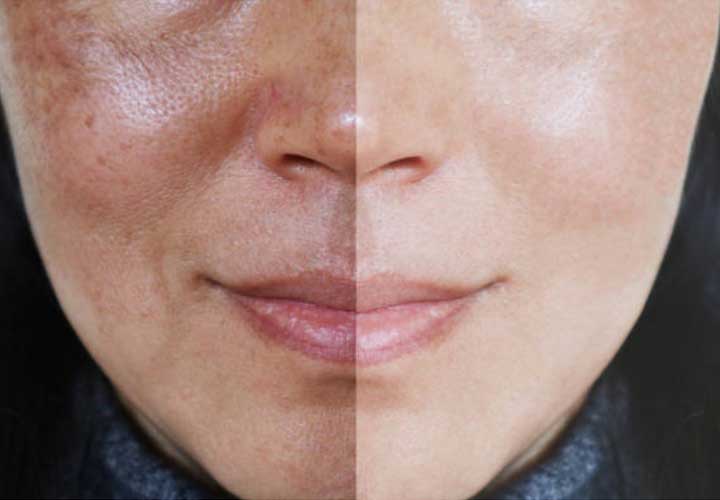- Hormonal Fluctuations
- Sun Exposure
- Genetics
With hormonal fluctuations, any shift in hormones can trigger melasma. Pregnant women experience significant hormonal fluctuations. Melasma is so common during the gestational period that it’s become known as the “Mask of Pregnancy” or may also be called Chloasma. Birth control and hormonal replacement medication can also contribute to hyperpigmentation.
Sun exposure can intensify melasma, despite using sunscreen frequently. This is because ultraviolet rays can stimulate the melanocytes in your skin, as well as the heat from the sun and visible light can trigger the pigmentation disorder to break loose. That’s why melasma tends to be worse in the summer, and faded hyperpigmentation may return when you spend too much time in the sun. Not only the sun, however, any type of heat can trigger melasma including but not limited to hot yoga, saunas, steam rooms and even cooking over heat. It may have a genetic component, as it often runs in families and is more common in women than men.
The good news?! There are treatment options to help your melasma symptoms subside. The best treatment options for melasma should be a combination of daily products used at home as well as professional services that we can offer here, at Rejuvenate Integrative Wellness. Being diligent about home-care products can help yield quicker results by using a mix of prescription-strength *hydroquinone*, kojic acid, retinol, and vitamin C products, as well as being meticulous about applying UVA- and UVB-protecting sunscreen. *Hydroquinone should only be used for a maximum treatment period of 3 months to avoid inflammation, rebound hyperpigmentation, and reduced tolerance.*



